On this date in 1952, Metro Prystai scored two goals and an assist, while Terry Sawchuk held the Montreal Canadiens scoreless as the Detroit Red Wings captured the Stanley Cup, becoming the first team to ever go undefeated in the playoffs.
But more significant than being awarded a silver chalice as a trinket to note one's success, on this date in 1952 the tradition of hurling a celebratory cephalopod was born in The Motor City.
The brainchild of Pete and Jerry Cusimano, owners of a fish market in Detroit's Eastern Market, the brothers had the bright idea to hurl an octopus onto the ice during the series clinching game to symbolize the eight wins needed to achieve the Stanley Cup during the days of the Original Six - the same number of tentacles possessed by an octopus, making for the perfect synergy in seafood.
"It was a good luck omen," said Cusimano. "The octopus has eight legs and we were going for eight straight."
The bizarre ritual caught on, and Sports Illustrated reported in 1978 when writing about the Red Wings playoff series versus the Atlanta Flames,
"Making their first cup appearance in eight seasons, the Red Wings won their best-of-three preliminary series in two straight games over the favored Atlanta Flames. And as Detroit clinched the upset with a 3-2 victory Thursday night before a record Olympia throng of 16,671, fans hurled no fewer than a dozen live octopuses onto the ice.
As a result, maintenance crews kept scurrying around the rink with pails and shovels and more mannerly fans began to wonder whether there might not be a more seemly way of saluting Detroit's hockey revival.
When the teams moved to Detroit for Thursday's game, the passions of Motown hockey fans were at fever pitch. Scalpers commanded $60 for a pair of $11 tickets, and parking spaces near the Olympia were going for $8. Inside the building, fans bombarded the ice with all those octopuses, as well as two dead chickens, scores of apples and other comestibles. There were moments when the inside of the Olympia was almost as littered as the mean streets outside."
The tradition continues to this day and has made a celebrity of sorts out of Al Sobotka, the Zamboni driver at Joe Louis Arena and the man responsible for retrieving the hurled octopi, which he does with aplomb, twirling the projectile from the depths over his head, winding up the faithful in the process.
During the 1995 playoffs, three dozen octopi were flung onto the ice during the playoffs and the record for a single octopus belongs to Bob Dubisky and Larry Shotwell, who topped their record 38 pounder a year later with a 50 pound monster, which Sobotka proudly displayed on the hood of his Zamboni.
With Detroit's first home game in their quest for the cup scheduled for Sunday, here is a primer on how to get your shot at gooey glory.
After purchasing your Octopus, preferably at the Eastern Market, boil it for 20 minutes on high heat with a little lemon juice and white wine to mask the odor. Not only will this hide the stench of the creature, a boiled octopus will bounce and roll when it hits the ice, rather than landing with a sticky splat that will leave an inky stain on the ice, making for more work for the ice crew.
Another key is the purchase of a desirable aisle seat, allowing a quick response and plenty of elbow room immediately following a goal.
Speaking of a goal, one must know when it is appropriate to toss your octopus. Acceptable opportunities are following the national anthem, following a Red Wings goal or a final game victory, and for heaven's sake, don't aim for anything other than open ice. You don't want to hit any of the game's participants with a disgusting sea creature, or worse, actually hurt them with a launched projectile of between five and thirty pounds.
Cusimano's insights on the proper form for throwing your octopus recommends holding it around the middle of the tentacles with the head hanging down by your knees and then, while keeping your arm straight, swinging it over your head as if throwing a grenade. "That's the only way you're going to get any leverage. You try to throw it like a baseball and you're going to throw your shoulder out," he relates.
Don't grasp it too far down the tentacles however, as they will likely break off in your hand, causing the bulk of the creature to end up randomly deposited on an unsuspecting fan nearby.
Keep in mind, it is against the law to throw anything on the ice during a game, and while no octopus hurler has ever been prosecuted, the Red Wings do try to discourage fans from bringing them into the game. With that in mind, all manner of smuggling techniques have been developed by would-be hurlers. After encapsulating the creature in a zip-lock bag, it can be stuffed stuffed down your shirt or pants, wrapped to your body with plastic wrap or hidden under a hat if size allows.
Once the beast has been launched, getting the stench off your hands with wet-wipes and a slice of lemon will do the trick if gloves weren't worn to begin with.
The Red Wings organization has embraced the tradition, including creating a 35-foot-wide purple octopus which they hang from the rafters of Joe Louis Arena named Al the Octopus, in honor of Sobotka, the Zamboni driver and octopus retriever.
Today's featured jersey is a 1951-52 Detroit Red Wings Terry Sawchuk jersey. The Red Wings jerseys from 1948 to 1961 were essentially the same as today's pattern, but lacked names on the back or numbers on the sleeves.
In his Stanley Cup Finals debut, Sawchuk won four straight games, including a pair of shutouts in Games 3 and 4 to clinch the cup, bookending the pair of shutouts he had to open the tournament against the Toronto Maple Leafs on his way to an 8-0 record in that year's playoffs.
Today's first video is Al the Octopus being moved into Joe Louis Arena in anticipation of the Stanley Cup Playoffs.
Here is a look at the Octopus tradition and what it means to Red Wings fans.
In this brief clip, Cody MeLeod of the Colorado Avalanche returns the octopus into the stands!
Finally, another look at the Octopus tradition through the lens of ESPN.

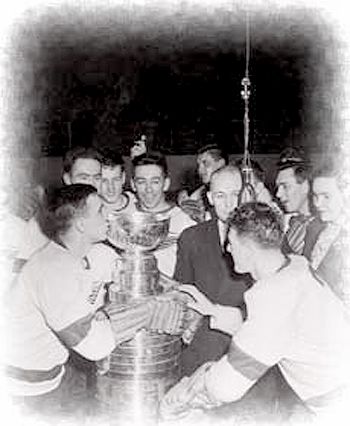
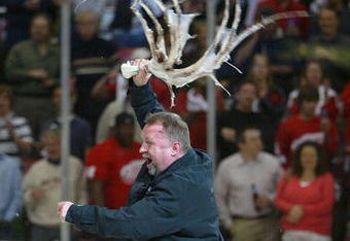
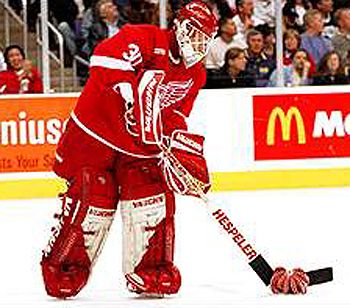

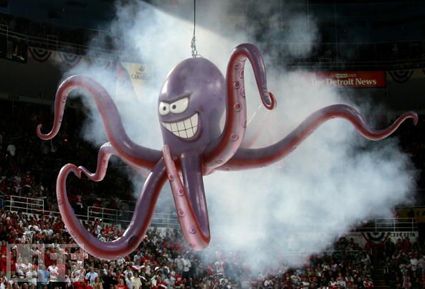
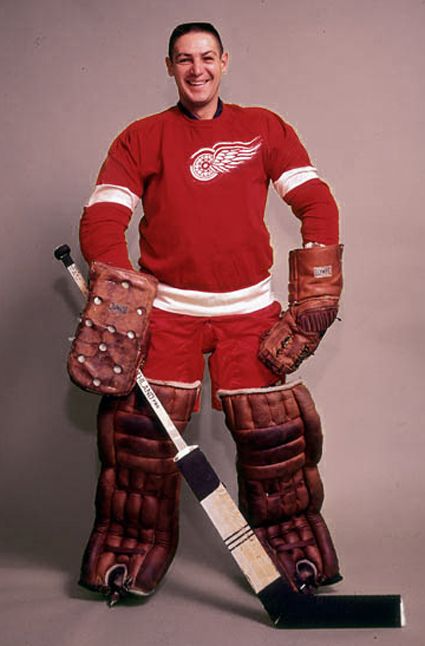










No comments:
Post a Comment
We welcome and encourage genuine comments and corrections from our readers. Please no spam. It will not be approved and never seen.